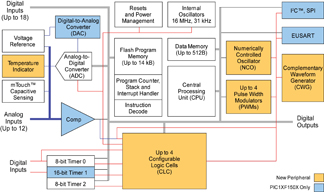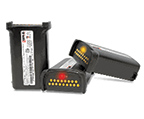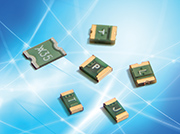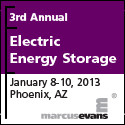 |
|
 |
October 2012 |
 |
|

|
 |
Feature Article
|
 |
 |
Why Your Next Renewable System Should be Built Around Energy Storage
Mark Cerasuolo, Senior Marketing Manager, OutBack Power
In the renewable energy industry, there has been much discussion about how to convert variable resources such as wind and solar into consistent and continuous energy similar to the electricity consumers are accustomed to enjoying from the utility.. ...read more
|
|
 |
 |
| |
Sponsored Announcement |
 |
 Cadex Electronics, Inc. is an established global leader in battery management products. With 30 years of experience developing and commercializing technologies for testing and servicing batteries, Cadex has delivered solutions to many of the world’s largest companies in radio and cellular communications, medical devices, portable computing, and aviation. Cadex Electronics, Inc. is an established global leader in battery management products. With 30 years of experience developing and commercializing technologies for testing and servicing batteries, Cadex has delivered solutions to many of the world’s largest companies in radio and cellular communications, medical devices, portable computing, and aviation.
New innovations include the versatile C8000 Advanced Battery Testing System that allows you to optimize batteries at every stage of product life, and the C5100 Battery Testing System that delivers tremendous value to cellular retailers.
Cadex is ISO 9001and ISO13485 (Medical) certified and our products are sold in over 100 countries.
Cadex Electronics Inc.
22000 Fraserwood Way • Richmond, BC V6W1J6 Canada
Contact: Sales • 604-231-7777 • info@cadex.com
www.cadex.com • www.BatteryUniversity.com
Bloggers Wanted - Battery Power is looking for knowledgeable professionals in the Battery industry who’d like to contribute to our online community by writing a blog to be featured on the website and in a monthly eNewsletter. Contributors can submit as often as they choose (1x, weekly, monthly, etc). If interested in more details, contact Shannon Given.
|
 |
 |
| |
New Products |
| |
Microchip Launches 8-bit Microcontrollers with Integrated Configurable Logic in 6- to 20-pin Packages
The PIC10F(LF)32X and PIC1XF(LF)150X MCUs each feature new peripherals, including Configurable Logic Cells (CLCs), Complementary Waveform Generators (CWGs) and Numerically Controlled Oscillators (NCOs), enabling functionality that was not possible before with low pincount MCUs. These general-purpose MCUs enable designers to enhance the functionality, reduce design size, and decrease the cost and power consumption of products.
 The CLC peripherals on the PIC10F(LF)32X and PIC1XF(LF)150X MCUs enable software control of combinational and sequential logic, which increases the on-chip interconnection of peripherals and I/Os, thereby reducing external components, saving code space and adding functionality. The CWG peripheral works with multiple peripherals to generate complementary waveforms with dead-band control and auto shutdown, which provides improved switching efficiencies. Additionally, the NCO peripheral enables linear frequency control and high resolution, which is required for applications such as lighting ballast, tone generation and other resonant control circuits. The MCUs also feature low power consumption, with currents of less than 30 µA/MHz in active mode, and less than 20 nA in sleep; as well as an on-chip 16 MHz internal oscillator, Analog-to-Digital Converter (ADC), and up to 4 Pulse-Width Modulation peripherals. An integrated temperature-indicator module enables low-cost temperature measurements. The CLC peripherals on the PIC10F(LF)32X and PIC1XF(LF)150X MCUs enable software control of combinational and sequential logic, which increases the on-chip interconnection of peripherals and I/Os, thereby reducing external components, saving code space and adding functionality. The CWG peripheral works with multiple peripherals to generate complementary waveforms with dead-band control and auto shutdown, which provides improved switching efficiencies. Additionally, the NCO peripheral enables linear frequency control and high resolution, which is required for applications such as lighting ballast, tone generation and other resonant control circuits. The MCUs also feature low power consumption, with currents of less than 30 µA/MHz in active mode, and less than 20 nA in sleep; as well as an on-chip 16 MHz internal oscillator, Analog-to-Digital Converter (ADC), and up to 4 Pulse-Width Modulation peripherals. An integrated temperature-indicator module enables low-cost temperature measurements.
To facilitate application development, the PICDEM Lab Development Kit (part # DM163045, $134.99) now includes samples of both the PIC10F322 and PIC16F1507 MCUs. Additionally, the F1 Evaluation Platform (part # DM164130-1, $39.99) is available for development with enhanced mid-range core 8-bit PIC MCUs, including the PIC1XF(LF)150X family. Also available is a free CLC Configuration Tool, to streamline the setup process of the CLC module by simulating the functionality of the registers and combinational logic in a graphical user interface (GUI).
The PIC10F(LF)320 and PIC10F(LF)322 MCUs are available in a 6-pin SOT-23 package, as well as 8-pin PDIP and 2 mm x 3 mm DFN packages. The PIC12F(LF)1501 MCU will be available in 8-pin PDIP, SOIC, MSOP and 2 mm x 3 mm DFN packages, and the PIC16F(LF)1503 MCU in 14-pin PDIP, SOIC and TSSOP packages, as well as a 3 mm x 3 mm QFN package. The PIC16F(LF)1507 MCU is available in 20-pin SSOP, PDIP, SOIC, and 4 mm x 4 mm QFN packages, as will the PIC16F(LF)1508/9 MCUs, when available. Pricing starts at $0.37 each, in 10,000-unit quantities.
Click here for more information. |
High Voltage Battery Power Cycling
NH Research has introduced its Model 4960 regenerative, bi-directional power module, a core building block of the Model 9200 battery test system. The 4960 (600 V/40A ) joins the 4912 (120 V/200 A) in providing independent power module operation well suited for low power testing and parallel power module operation to meet higher power testing needs such as EV battery pack applications.
NH Research power modules are highly flexible, scalable and measurement-rich test instruments used for testing batteries, fuel cells, super capacitors and power electronics. The battery simulation feature accelerates testing of BMS, APM, charger and other battery related electronics.
NH Research has released EnerTest, a graphical test sequencer specifically optimized for energy storage device testing. Test engineers can rapidly generate complete test routines, take measurements (temperature, voltage, strain), manage huge data streams, control environmental chambers, communicate via the CAN bus, and generate detailed test reports without writing a single line of code.
Global Technology Systems, Inc. Introduces Genius Batteries
 Global Technology Systems, Inc. (GTS) has introduced the Genius Batteries. Genius Batteries are an intelligent solution for simple and efficient battery management. Millions of workers around the globe rely on mobile devices to complete critical tasks and battery management is essential to their success. Until now these workers have had little, if any, insight into the health of their batteries, leading to costly delays and disruptions including mid-shift failures and unnecessary maintenance costs. In-field experience demonstrates that standard batteries are either used beyond their useful life or are discarded with significant life remaining. Global Technology Systems, Inc. (GTS) has introduced the Genius Batteries. Genius Batteries are an intelligent solution for simple and efficient battery management. Millions of workers around the globe rely on mobile devices to complete critical tasks and battery management is essential to their success. Until now these workers have had little, if any, insight into the health of their batteries, leading to costly delays and disruptions including mid-shift failures and unnecessary maintenance costs. In-field experience demonstrates that standard batteries are either used beyond their useful life or are discarded with significant life remaining.
Genius Batteries deliver a deeper and more accurate measure of a battery’s health without the need for additional equipment. The measure SoH gives users greater confidence that the batteries they rely upon are healthy enough to operate full shift.
Each Genius Battery utilizes a built-in LED indicator to inform the user of its SoH at all times. As the battery is used and its health declines, the LED indicator turns yellow, informing the user that they should order a replacement. When the LED turns red, the user knows the battery is no longer reliable and should be replaced. These lights are simple to understand and indicate exactly when to reorder and replace the battery.
TE Connectivity’s New Low Rho SMD Series Helps Save Space, Cost and Power Consumption in
Mobile Electronics
 TE Circuit Protection has announced a family of nine low rho (low-resistance) SMDs (surface-mount devices) designed for space-constrained mobile applications. The devices help provide both overcurrent and overtemperature protection for the battery pack PCMs (protection circuit modules) used in compact consumer devices such as smartphones, MP3/4 players and portable GPS units. The low rho SMD series addresses a need in the consumer-driven mobile device market for a low-cost, low power consumption and flexible solution for today’s increasingly compact products. TE Circuit Protection has announced a family of nine low rho (low-resistance) SMDs (surface-mount devices) designed for space-constrained mobile applications. The devices help provide both overcurrent and overtemperature protection for the battery pack PCMs (protection circuit modules) used in compact consumer devices such as smartphones, MP3/4 players and portable GPS units. The low rho SMD series addresses a need in the consumer-driven mobile device market for a low-cost, low power consumption and flexible solution for today’s increasingly compact products.
Manufacturers of handheld consumer products require the smallest possible components that occupy the least amount of board space while helping reduce production costs. Fulfilling these demands, the low rho SMD products provide low-resistance in an industry-standard form factor of 1210 (3.0 mm by 2.54 mm), 1206 (3.0 mm by 1.52 mm), or 1812 (3.0 mm by 4.57 mm) thus meeting board space requirements. In addition, these devices can be assembled with a reflowable soldering technique, as opposed to the spot welding process required by many other components, to save board space and reduce production costs.
The low rho SMD device resistance is 10 to 25 milliohms after reflow process. The devices’ low resistance helps reduce power consumption and improve battery efficiency. The nine new devices in the low rho SMD series are all designed for an operating current of 2 A and above.
Thermal Protection for Lithium Polymer Battery Cells in Ultra-Thin Portable Electronics
Designers are increasingly turning to high-capacity, envelope-like LiP (Lithium Polymer) cells to optimize space in media tablets, ultra-thin PCs, electronic readers and other small, slim consumer electronics. At the same time, battery manufacturers have been challenged to find ultra-compact overtemperature protection devices that can meet the higher currents typically found in these applications. In response, TE Circuit Protection introduces the MHP-TA series of ultra-low-profile (5.8 mm by 3.75 mm by 1.15 mm) resettable thermal cut-off (TCO) devices for lithium battery protection. The MHP-TA series of devices features a 9 VDC rating, two product categories with different levels of current-carrying capacity, and multiple cut-off temperature ratings.
The MHP-TA series is an extension of TE Circuit Protection’s MHP (metal hybrid PPTC) technology, which connects a bimetal protector in parallel with a PPTC (polymeric positive temperature coefficient) device. The initial MHP product offerings, the MHP30-36 and MHP-SA series, targeted higher-current (above 30 VDC, 30 A) Li-ion battery pack applications used in portable power tools and energy storage systems.
The new MHP-TA series is intended for applications with lower voltage and current ratings. As a result, TE Circuit Protection was able to downsize the MHP product to offer an ultra-compact device that meets the space requirements of the growing LiP market. In battery cell designs, the MHP-TA series helps provide resettable overtemperature protection, while utilizing the PPTC to act as a heater and to keep the bimetal latched until the fault is removed.
The MHP-TA series comprises nine devices with two levels of current carrying capacity: low-current MHP-TA6-9 products with an approximately 6 A hold current at 25°C, and high-current MHP-TA15-9 products providing a hold current of approximately 15 A. The low-current MHP-TA6-9 devices are available in four different current ratings (72°C, 77°C, 82°C, 85°C) and the high-current MHP-TA15 devices in five ratings (72°C, 77°C, 82°C, 85°C, 90°C).
|
| |
Industry News |
| |
Green Light from the US Department of Energy
Det Norske Veritas (DNV) has released that its project for exploring the outer limits of battery operations has been selected by the US Department of Energy to receive funding from the Advanced Research Projects Agency Energy (ARPA-E).
“DNV is proud to have our project selected by the US Department of Energy. We are excited to participate in the development of breakthrough energy storage technologies and to join the innovation journey towards new ways of storing and using energy”, said Davion Hill, senior engineer and project manager for the battery initiative in the DNV Research and Innovation Materials Program.
In cooperation with partners NexTech Materials and Beckett Energy Systems, the DNV led project will use battery life prediction modeling and sensor monitoring to identify where the limits of battery operation can be pushed. By implementing the modeling and sensor approach, together with an innovative new sensing technique, the project aims to extract greater performance from batteries.
The project is innovative because it uses an off gas sensing technique, which improves safety, while also deploying life prediction models for commercial application. This detection method can optimize performance and help repurpose batteries for other applications. A second outcome of the project will involve the demonstration of second life batteries in an energy storage application.
To date, there has been much discussion about a second life of batteries. Little data is available, however, about successful use of second hand batteries in commercial applications. The innovative solution of the DNV led project will enable this demonstration to take place.
Testing activities will occur at the DNV KEMA Powertest facility in Chalfont, Penn., the largest independent high-power electrical testing laboratory in the US. The acquisition of a majority stake in KEMA by DNV in early 2012 played a crucial role in this project.
Batteries and Supercapacitors for Smart Portable Devices 2013-2023
MarketResearchReports.Biz has released Batteries and Supercapacitors for Smart Portable Devices 2013-2023: Markets, Technologies, Companies. Mobile phone and laptop sales have increased consistently by double digits in the last years, now with the presence of Smartphones and Tablet PCs this trend will boost in the following years. This new age of communications, information and portability would have not been possible without energy storage solutions to power these portable devices.
Lithium batteries are currently the dominant technology in the energy storage space; this is because of their superior energy density characteristics. The consumer electronics industry has pushed their production to the scale of billions, and consequently through economies of scale optimized its supply chain and reduced their price. However lithium battery technology capabilities are being challenged by the modern multifunctional portable devices that are increasingly requiring higher performance in terms of power density. While current research and development pathways aim for the emergence of a new generation of high energy density technologies, alternative energy storage technologies are challenging the dominance of lithium batteries. This is the case with supercapacitors, which are an emerging energy storage technology whose characteristics make them strong candidates for satisfying those specific functions where lithium batteries underperform.
On the other hand, the developments of electronics and material science is allowing for new developments in the energy storage field. Now we can build or print thin film batteries on different surfaces allowing for new energy storage solutions which coupled with energy harvesting (collecting energy from the environment) and radio frequency technologies unlock many potential applications as traceability in consumer product supply chains and internet remote localization without the need of big devices, just to mention some examples.
Energy storage for smart and portable electronic devices is currently the biggest and fastest growing battery market. The consumer electronics segment is one of the fastest changing markets. Portable electronic devices are becoming increasingly multifunctional and this trend is currently requiring better performance from batteries. This report explains the drivers in this changing segment, what are these changes demanding from battery technologies and what are the research and development paths to improve battery technologies accordingly. We present a new entrant technology in the energy storage industry: supercapacitors, which compared with batteries, can deliver high power instantly and do not rely on chemical processes to store energy so they have longer useful lives. We present what is the role of this new technology as an alternative to improve battery performance and satisfy the changing demands of the consumer electronics market. Indeed supercapacitors as an emerging energy storage alternative are challenging the predominance of batteries and complementing their functions. By the other hand thin film batteries open a new category in energy solutions for specific niche markets which can potentially launch them to mass production. RFID and Wireless Sensors are two examples.
Emerging battery manufacturing technologies as spray battery painting and new technologies as transparent batteries hold the promise of opening new possibilities in portable device design and energy storage applications.
Flux Power Engages with Huanyu New Energy to Supply Advanced Lithium Storage Solutions World Wide
Flux Power Holdings, Inc. has selected Henan Huanyu New Energy Technology Co., Ltd, as its preferred battery supplier for the production of its advanced lithium energy storage systems. Headquartered in Beijing, China, Huanyu New Energy is a joint venture by Henan Huanyu Group and Origo Partners PLC, that specializes in the research and development, manufacture, and sales of advanced lithium power batteries. Founded in 1982, Henan Huanyu Group was the pioneer of the rechargeable battery industry in China and maintains one of the largest vertically integrated business operations in the Chinese rechargeable battery industry.
Flux identified Huanyu New Energy as the supplier to provide its existing and potential customer base with cost-effective and technologically advanced lithium batteries for Flux Powers' advanced energy storage systems (ESS). Huanyu New Energy's battery products consist of soft-packed, large capacity rechargeable lithium cells without the excess electrolyte of traditional packaged cells. This pouch cell battery technology yields uniformity and longer cycle life with less volatile compounds and enhanced safety. In addition, the batteries can be installed in any direction, substantially improving the utilization of system space. These characteristics make Huanyu cells well suited power source for the electric vehicle (EV), solar storage, grid storage and back-up power markets addressed by Flux Power.
Wireless Power Consortium Issues Guidelines for Wireless Charging In Automobiles
The Wireless Power Consortium (WPC) has approved a series of guidelines for Qi wireless chargers intended for automotive aftermarket use. Products meeting the guidelines will be able to include the description, “Meets Qi Automotive Aftermarket Guidelines” along with the Qi logo.
Powered by a charging ecosystem of more than 110 certified products and 8.5 million units sold worldwide, Qi is backed by an expanding list of more than 120 industry-leading members.
“As Qi is built directly into an increasing number of mobile phones, consumers want to wirelessly charge their devices everywhere they go, especially in their automobiles,” said WPC Automotive Application Group Chair Luc Jansseune. “These new guidelines will help accelerate adoption of Qi by assuring consumers the products they buy have met rigorous testing for optimal performance in vehicles.”
As automotive OEMs begin to incorporate Qi transmitters in vehicles, several WPC member companies have automotive Qi wireless charging systems in development. The newly approved guidelines will address product safety, emissions, interference and the vehicle interface.
“Our goal is to make Qi wireless charging available wherever you live, work or travel,” said WPC Chairman Menno Treffers. “Now that we’re approaching 10 million Qi units worldwide, automotive companies are very interested in integrating Qi in automobiles. These guidelines will make it much easier for them to accomplish that goal.”
Batteries Remain a Key Issue in Hybrid and Electric Vehicles
Due to the high cost of batteries, many consumers consider hybrid and electric vehicles to be too costly when compared to conventionally-powered models, which are becoming more fuel efficient. This poses a dilemma to auto makers, which face tightening fuel economy and emission mandates that may require electrified powertrains for compliance. The Strategy Analytics report, “Assessing OEM Hybrid and Electric Vehicle Strategies: Batteries Remain a Key Issue” looks at what areas need further development and the current strategies aimed at lowering system cost so that these vehicles will become more affordable.
Kevin Mak, analyst in the Automotive Electronics Service (AES) at Strategy Analytics, commenting on the recent announcement from Toyota that its eQ electric vehicle will not be considered for mass production, said, “This is yet another example of auto makers that currently see electrified vehicles as a niche. At present, the cost of batteries is too high, as the cost of electric cars is double or even triple their combustion-engine or conventional or conventionally-powered equivalents. Furthermore, battery energy and power densities are not sufficient to allay the ‘range anxieties’ of many consumers.”
“While breakthrough technologies are being sought, many auto makers are pursuing platform designs from which economies of scale can result in cost reductions.” Mak added, “While charging infrastructures are in their infancy, hybrids will see a greater level of deployment. However, not all auto makers have the same electrification strategy. As the market develops, they will form groups of ‘champions’, ‘pragmatists’ - who will use electrification as an ‘insurance’ in complying with future mandates - and ‘reluctants’, who merely need to keep pace with rivals.”
|
| |

|
 |
Event Listings |
 |
 |
3rd Annual Electric Energy Storage Conference
January 8-10, 2013
The Embassy Suites Biltmore, Phoenix, AZ
 The 3rd Annual Electric Energy Storage Conference will be a two and a half-day, industry focused event, specific to those within EnergyStorage, Renewable Energy, Regulatory Policy and Planning and Research and Development. This conference will bring together the leading senior executives from PJM Interconnection, Luminant, NERC, MISO, Southern California Edison and many more to discuss technological advances and case studies, while focusing on the tools and strategies necessary to bring energy storage operations into real time energy operations. The 3rd Annual Electric Energy Storage Conference will be a two and a half-day, industry focused event, specific to those within EnergyStorage, Renewable Energy, Regulatory Policy and Planning and Research and Development. This conference will bring together the leading senior executives from PJM Interconnection, Luminant, NERC, MISO, Southern California Edison and many more to discuss technological advances and case studies, while focusing on the tools and strategies necessary to bring energy storage operations into real time energy operations.
|
 |
 |
|
 |
 |
|
 |
| |
Contact Us |
|
| |
Submit editorial content to Shannon Given at 608-351-9245
For advertising information contact Jeremy Fleming at 800-803-9488 X121
Webcom Communications • 7355 E. Orchard Road, Suite 100; Greenwood Village, CO 80111
Phone: 800-803-9488 • Fax: 720-528-3771 • www.infowebcom.com |
|
| |
© 2012 Webcom Communications Corp. |
|
|
|
|
|
|